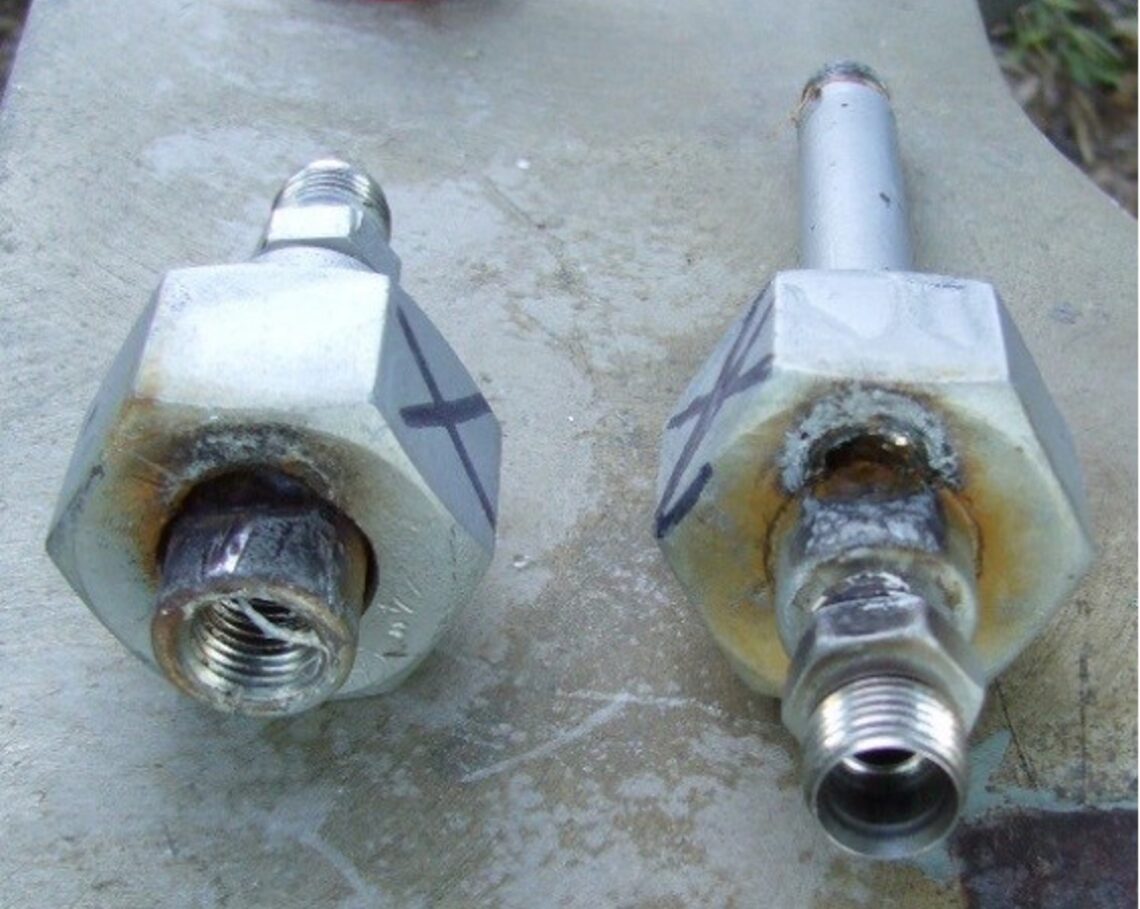Addressing Safety Issues on Airport Fueling Stations
Airport fueling stations depend on piping, storage tanks and electrical equipment to deliver jet fuel. To protect these assets, cathodic protection (CP) systems are used to prevent corrosion on buried portions of the piping and tank bottoms. In addition, to maximize CP system efficiency, these stations are isolated through high resistance coatings and electrical isolation joints at pipe flanges and connections to electrical equipment.
These fault and lightning events can apply high voltages to the isolation fitting, which can cause the isolation material to fail. When this occurs, the steel flange face can be damaged due to arcing and heating from excessive current flow. This arcing and isolation material failure can lead to product ignition if there is a product release associated with the over-voltage event. Protection against over-voltage conditions is needed on fueling stations to assure continued operations while also minimizing personnel risk.

Failure of dielectric union due to over-voltage fault.
Dairyland Solid-State Over-Voltage Protectors
Connecting a Dairyland solid-state over-voltage protector (OVP) device across an isolation joint will protect against AC faults and lightning events by providing a current path around the joint and limiting the voltage to safe levels to protect the isolation system and personnel working in the area. During a fault, these devices instantly switch into their protective mode, and then automatically switch back to an open or OFF mode, providing isolation again.
Isolation Joint Codes & Regulations
When addressing over-voltage safety concerns, applied products must address certain safety and compliance standards for the location in which they will be installed.
United States, Including Military Use
Most airport fuel piping applications that involve isolation joints are classified as hazardous locations. These classifications are:
- Class 1 Division 2: Explosive gases or vapors are not normally present
- Class 1 Division 1: Explosive gases or vapors may normally be present
Protective devices must be selected to meet or exceed the hazardous location classification of the airport fueling site. Dairyland offers certified products for either Division 1 or Division 2 classifications.
US Military airport facilities are constructed to the requirements of the Department of Defense UFGS standard 33 52 43.13 for aviation fuel piping, and section 2.1.5.4 for isolation gasket kits and surge protector devices. Dairyland’s OVP and OVP2 were designed to meet these requirements and have been used extensively around the world on US military bases, or other locations where DOD specifications are applied.
International
Many countries recognize and use products certified to the Class/Division system and locations with US military presence, often apply the DOD specification mentioned above.
Other international standards and systems that apply to isolation joint protection are as follows:
- ATEX- for European (EU) applications
- IECEx – for extensive world-wide use
- EAC- for EurAsian Conformity, countries in the EuraAsian Economic Union
Product Recommendations
For aviation isolation joint protection, the following models are recommended:
- For Division 1 (Zone 1):
- Model OVP-2/2-3.7-100 or
- Model OVP-2/2-3.7-100-M8 or
- Model OVP-2/2-3.7-100-M10
- For Division 2 (Zone 2):
- Model OVP2-2/2-3.7-100
- Note:
- The OVP Model encompasses all OVP2 ratings, thus the user could standardize on the OVP to address all installations.
Why Not Use an Arrester?
Lightning arresters and spark gap arresters are often used as lightning protection devices on isolation joints. However, these devices fall short of an efficient, reliable, and safe solution when compared to solid-state over-voltage protection devices and are not recommended for fueling system protection. Some of the short comings include the lack of fail-safe construction, limited AC fault current ratings, low voltage thresholds and their limited lifespan.
For more details, reference technical article Dairyland OVP Devices vs. Competing Technologies.
For more details on using over-voltage protectors on airport fueling station applications download the application guide Airport Fueling Systems Isolation/Bonding.
Want To Dive Deeper?
Join One of Our Learning Events.
Our event schedule provides you the in-depth product and application training you need to correctly apply Dairyland products.